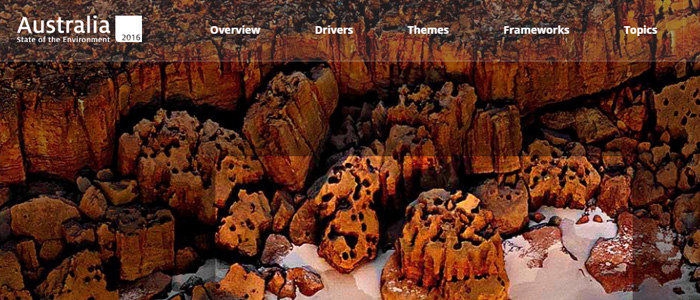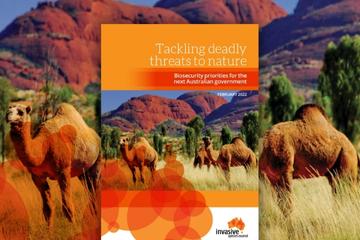
The most recent state of Australia’s environment report was tabled in Federal Parliament last year to limited fanfare. For invasive species it paints a grim picture.
In an ideal world all Australian’s would be aware of the purpose and content of the five-yearly State of the Environment (SoE) reports; lauding their governments for successes while holding them to account for reported failures.
At the very least the reports should be compulsory reading for our representatives at state and federal levels. That this is not the case sadly reflects a general ignorance of our reliance on the natural environment to support our economy, health and wellbeing.
As with previous State of the Environment reports, the threat posed by invasive species to the environment, industry and health gets top billing along with: habitat clearing and fragmentation, as well as climate change. A key finding of the report is that:
Invasive species have a major impact on Australia’s environment, threatening biodiversity by, for example, reducing overall species abundance and diversity. They represent one of the more potent, persistent and widespread threats to the environment.
The report’s “innovative digital platform” can be used to show just how pervasive and important invasive species are, with more than 200 references from across all themes.
References to invasive species pop up everywhere, mirroring the problems in the real world. Unsurprisingly, the cross-referencing allowed by the platform also shows that not much has changed for the better since the previous report, published in 2011. And we should not expect otherwise – threats so severe and pervasive will not be overcome in the five years between reports.
The report finds that the general consensus (among Natural Resource Managers) is that “the impact of invasive species is not diminishing and, in combination with other stressors, may be increasing’.
Many examples are offered including the continuing expansion of cane toad range and their impact on native predators, the spread on myrtle rust, and the continuing incursions of fire ants outside their existing range.
In a departure from the 2011 report, the 2016 report highlights a number of drivers of change beyond our borders and includes the influence of “the potential for invasive species to enter Australia”.
However, the news is not all bad. The eradication of rodents and rabbits on Macquarie Island and the subsequent recovery of tussock grasses is presented as a case study of successful strategy, collaboration, resourcing and implementation. Likewise, the continuing re-establishment of several birds and mammals following eradications of feral predators on Western Australia’s Montebello Islands has improved the conservation status of several species including the vulnerable burrowing betong.
These and other examples demonstrate invasive species can be eradicated, or at least their impacts significantly lessened, if management programs are properly targeted and adequately resourced. Last year’s report notes that land managers consistently report that a lack of funds is the main factor limiting their effectiveness in the control of invasive species.
Two related key findings under the biodiversity theme highlight how a lack of monitoring is a significant obstacle to our fully answering the key questions about the threat from invasive species: where are they, how many are there, and what impact do they have? The first key finding is:
Knowledge about the distribution and abundance of invasive species and their impacts on biodiversity remains incomplete and a high risk to the resilience of biodiversity.
And the second:
It is not possible to assess the overall long-term effectiveness of management actions taken to limit the impact of invasive species.
Not possible that is, given the lack of knowledge mentioned in the previous key finding. The report notes that evidence for the success of management actions to limit invasive species is often very localised, short-term and anecdotal.
To indulge in some crystal-ball gazing, we could anticipate that the next report, due in 2021, will come to many of the same conclusions as its predecessors. However, with the right political will we might anticipate successes from:
- The re-invigorated red fire ant eradication program.
- Rodent eradications on Lord Howe Island and other islands.
- A lessening of the impact of feral cats from implementation of the national Threatened Species Strategy.
- Creation of an environmental biosecurity preparedness body such as Environment Health Australia.
- Implementation of recommendations from the Intergovernmental Agreement on Biosecurity review.
- Innovations from the Centre for Invasive Species Solutions and other research bodies.
We live in hope, and in the meantime act from the strong desire to make things better.



